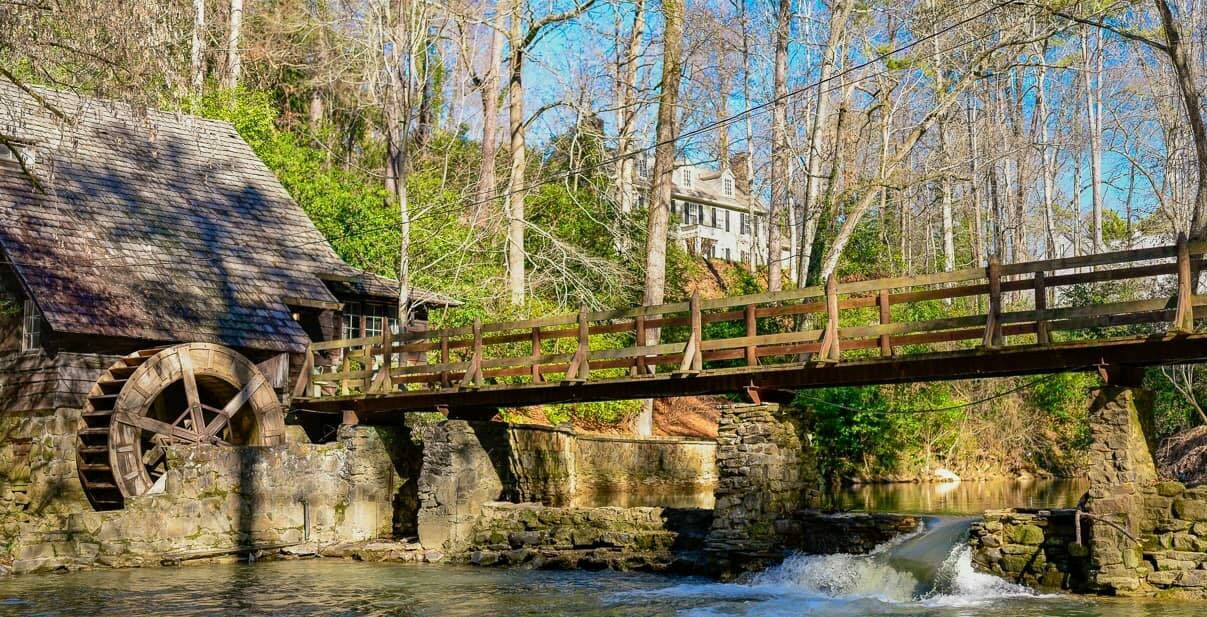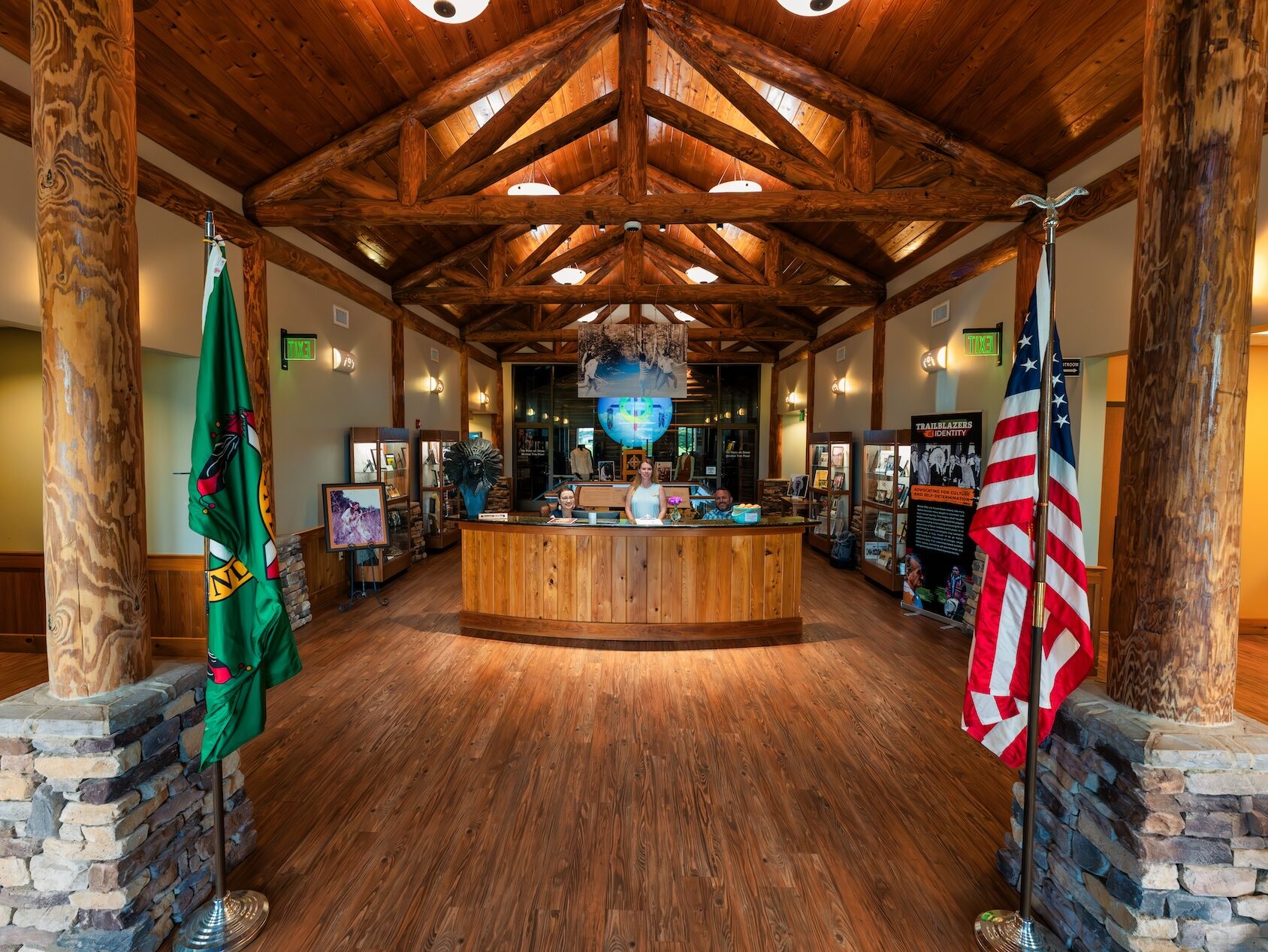Jemison Trail is a well-loved trail found in Mountain Brook, Alabama. The city of Mountain Brook has just announced that the trail will be closing on Monday, June 26th to allow for renovation. The renovation is projected to take roughly 6 months. $2.7 million has been donated to the renovation effort, and residents are excited to welcome the next iteration of one of the city’s favorite outdoor features.
In the meantime, trail visitors are encouraged to visit a new trail named the Chief’s Woodland Trail. The gravel trail offers a fresh vantage point of Shades Creek and makes its way through the neighboring woods that were previously inaccessible. It is a future goal of the city to connect this trail by bridge to the Jemison Trail.

(City of Mountain Brook/Facebook)
In anticipation of the upcoming renovation, let’s take a look into the Jemison Trail’s ecological significance and history.
Thomas N. Carruthers perfectly outlines the trail’s ecological impact, “Shades Creek rises fourteen miles above Jemison Park, from springs in the woodlands northeast of Norris Yards at an elevation slightly more than 800 feet above sea level. Below Jemison Park, the creek continues southwest for another 43 miles until, in Shelby County near the Bibb County line, it enters the Cahaba River; there, the elevation is about 310 feet.
The annual floodings mean that plants which cannot tolerate much water – such as hepatica, dwarf iris, and trillium, which live in abundance a few hundred feet away on the northern slopes of Shades Mountain – can generally be seen in the park only along the Nature Trail below Overbrook Road.
The most dramatic recent growth has been the privet, a plant which came to this country from southern Asia and did not exist to any extent in the park as late as 1925. Today, privet and honeysuckle, also introduced from the Orient, are covering much of the park land that might otherwise host native plants.
The park trees, a mixture of pines and hardwoods, are second growth. Before 1900 this land had been cut over to provide land for farming and fuel for the McElwain iron furnace. Today in the park the heavy tree cover blocks much of the sunlight. The softwoods have difficulty regenerating. However, older specimens of loblolly and shortleaf pines can be seen throughout the park. Occasionally, when some of the older trees fall, windows to the sun are opened, and the pines spring up.
The great amount of tree shade means that many of the park’s smaller shrubs and the wildflowers must not require much sunlight. The combination of shade and moisture also attracts ferns, such as cinnamon, lady and New York; the park has at least ten fern species.
The most dramatic recent physical changes in the park have been the addition of the trail system, the clearing of much of the undergrowth, and the planting of grass in some areas.
All of these factors determine what kinds of animal life can survive here.
The most numerous of the larger mammals in the park – the raccoon – nests in holes in the dead hardwood, and sometimes pine trees. These dead trees are also the home of the pileated woodpecker. The undercover provides nesting space for cardinals, towhees, Carolina wrens, brown thrashers and many other birds. The moist ground below is a home for many species of amphibia.
The challenge to the life of the park today is people and the way people deal with the park. Friends of Jemison Park hopes you will join in trying to conserve our park.”
The Friends of Jemison Park also note important periods of park expansion, “In 1976, Susan L. and Carter S. Kennedy generously contributed five acres of land between Easy Street and Shades Creek to the Friends, and in 2000 Frances B. and James W. Shepherd donated a crucial piece of land on the south side of the creek along Overbrook Road that includes part of the Nature Trail.
During the early years of the Friends, Luke Evins offered to donate to the City of Mountain Brook a parcel of streamside land on the south side of Shades Creek upstream from the Mountain Brook Club golf course and adjacent to the Civil War foundry. Since the City declined the offer at that time, the Friends of Jemison Park accepted it as a valuable piece of park land within the city limits. It was later given by the Friends to the City and has become an important and scenic link in the Mountain Brook Trail System.”
If you are interested in making a donation that would help fund the upcoming renovation, the city asks that you visit the Friends of Jemison Park’s website here.
[/fusion_text][/fusion_builder_column][/fusion_builder_row][/fusion_builder_container]




